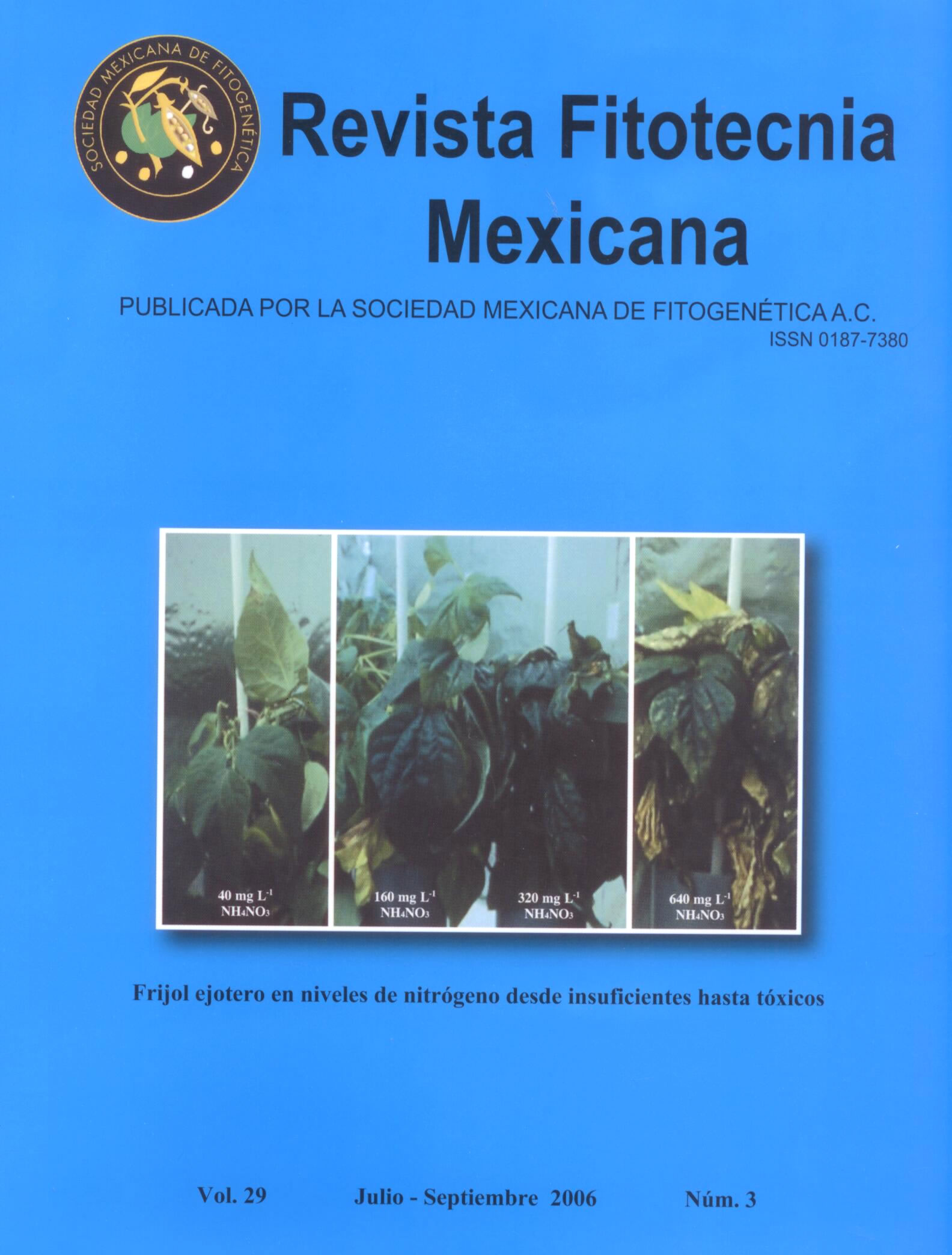PHENOTYPIC DIVERSITY OF THE CACAHUACINTLE MAIZE LANDRACE AT THE TOLUCA VALLEY, MÉXICO
Main Article Content
Abstract
At the Toluca Valley, México, the Cacahuacintle maize (Zea mays L.) landrace is sown in 20 000 ha for inmature cob harvest and 10 500 ha to produce mature grain for “pozole”, a Mexican dish. Al though the grain yield and price are relevant (yield from 2000 to 4000 kg ha-1; and in the last four years the price per kilogram was from 2.0 to $9.50 pesos), only local populations visually selected by farmers are currently sown. To identify Cacahuacintle populations with greater genetic potential, 30 local populations were tested in 1999 at San Marcos de la Cruz, San Diego La Huerta and Calimaya de Díaz González, three locations of the Toluca Valley, State of México. In each location, a randomized complete block design with three replications was used. The combined analysis was computed as series of experiments over locations. The obtained results allowed to conclude that: 1) The genotype x environment interaction was only significant for number of ear rows; 2) Populations identified as 3, 5, 7, 17, 19 and 21 (yielding from 5719 to 6379 kg ha-1) are the best for a Cacahuacintle breeding program; 3) The available genetic variability in Cacahuacintle allows selection for reducing plant height, ear height and number of rows, and for improving grain yield (genetic variability between populations was 45.9, 40.8, 47.0, and 50.2 %, respectively); 4) The genetic variability between Cacahuacintle populations for other traits was low (H2 = 15.9 % for ear length; for ear diameter, cob weight and grain per ear weight the estimated values of H2 were negative).

